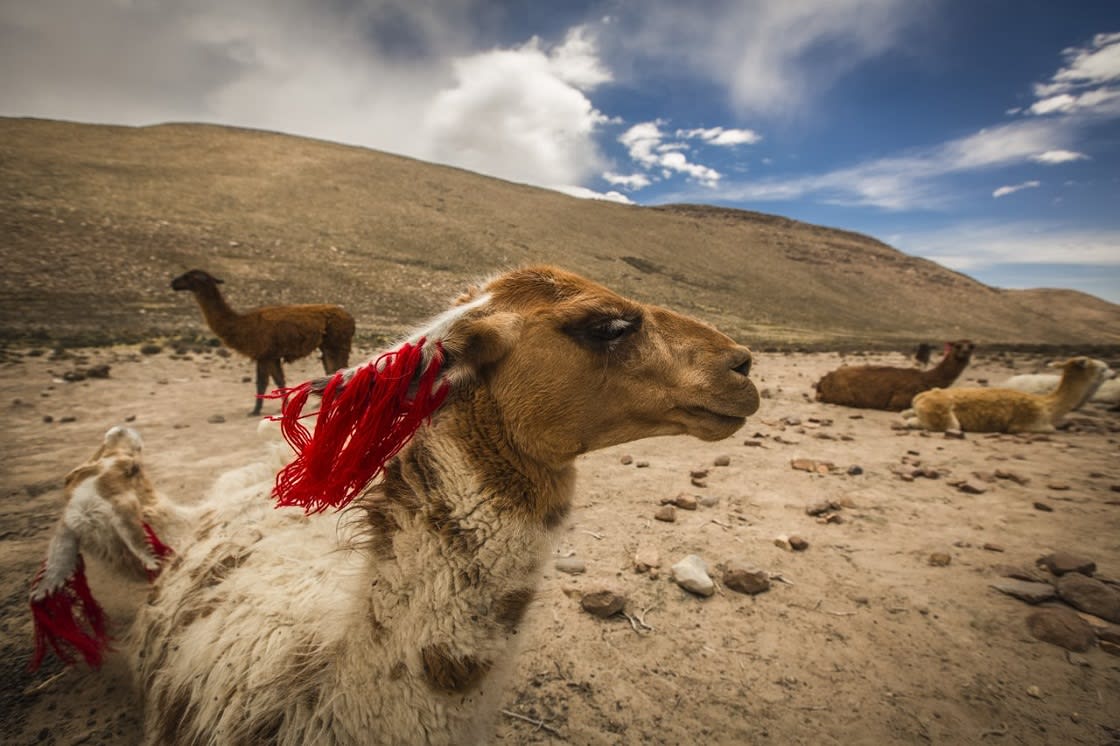
Llamas may be a little intimidating up close but that doesn’t stop them from being absolutely adorable. These big, fluffy creatures can be found all over the world but are native to South America, where they are used for their wool and meat and as a pack animal.
If you head to Peru, Bolivia or Ecuador on your next vacation you are guaranteed to see more llamas than you have ever seen cumulatively up until that point. Unless, of course, you live on a llama farm back home. These wonderful animals are all over the place and they come with some pretty interesting history and culture as you’ll discover in our 10 fun facts about llamas:
1.The llama is a relative of the camel, but without the hump.
2.They were first domesticated in the pre-Colombian times, around 5,000 years ago, and have been used by the Andean people as pack animals ever since.

A full-grown llama can cover around 20 miles in a day
3. Llamas can carry an astonishing amount and if they are in good physical condition, can cover around 20 miles in a day. Interestingly, llamas are well aware of their own physical limits. If a llama is laden down with too great a weight, it will simply lie down on the floor and refuse to move. It might even hiss and spit to show its discomfort.

Llama In The Uyuni Flats
4. Llamas subsist on grass and other plants and do not need very much water as they absorb it from the plants they consume. This allows them to thrive in sub-optimal conditions, such as those found in the barren Bolivian Altiplano.
5. The llama’s stomach has three compartments, allowing it to efficiently digest tough vegetation, so efficient in fact that llama excrement has virtually no odor to it at all. Because of this the Incas used to leave llama feces in the sun to dry and then burned it for fuel.

Llama Wool Fiber
6. Llama wool isn’t itchy like sheep’s wool as it is free from lanolin, which is the fiber that causes sheep’s wool to be so itchy.
7. Llama wool fibers are also fire-resistant, making that sweater of yours both comfortable and safe!
8. Llamas are amazingly expressive creatures and if one llama has a problem with another llama, it will express this by sticking its tongue out at the other llama.
9. Llamas can also reach a top speed of around 35 mph, so you don’t want to get on a llama’s bad side or you might find yourself in a high-speed chase.

Llamas In The Altiplano
10. A quite remarkable social hierarchy exists within llama herds. Much like humans, llamas that hiss, spit and fight are kept at the lower end of the social spectrum, while those with more discipline are held at the top. However, it is easy to slip down the ladder – one small fight can cause a llama to be knocked off its top spot and forced to the other end of the social sphere.
While Rainforest Cruises aim to provide accurate and up-to-date information, we make no representations as to the accuracy or completeness of any information herein or found by following any link on this site. Rainforest Cruises cannot and will not accept responsibility for any omissions or inaccuracies, or for any consequences arising therefrom, including any losses, injuries, or damages resulting from the display or use of this information.




